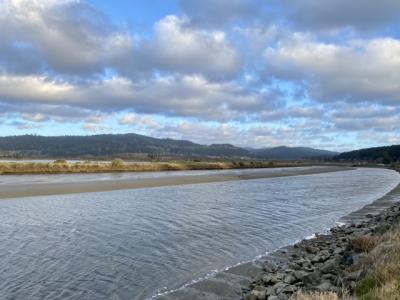Adaptation in Motion
April 21 - 23, 2021
Assessing Ecological Risks from Streamflow Diversions in Coastal California Streams
21 April 2021
9:00am - 5:00pm
Workshop Coordinators:
Bill Trush, Co-Director HSU River Institute
Bill Trush, Co-Director HSU River Institute
Valerie Zimmer, State Water Resources Control Board
Katrina Nystrom, Salmonid Restoration Federation
The riffle crest thalweg (RCT) is a familiar geomorphic feature offering an alternative to present-day bypass diversion strategies for managing unregulated California streams. By restricting streamflow (Q) diversions to a relatively small percentage change in ambient RCT depth, the necessary magnitude, duration, frequency, and timing of key ecological processes will be protected. This workshop will: (1) introduce basic RCT concepts, (2) connect stream hydraulics to stream ecosystem processes, (3) review recent RCT research/monitoring, and (4) reserve ample opportunity for discussion and hands-on data analysis. Valerie Zimmer provides an engineer’s perspective, while Bill Trush provides that of a stream ecologist. Katrina Nystrom, a recent HSU Masters graduate, will present an RCT diversion risk analysis of Pacific lamprey ammocoete rearing habitat de-watering during spring-through-summer recession hydrographs. Workshop participants will be shown how to quantitatively link RCT hydraulics with stream ecosystem processes, then shown how to apply these linkages practically and quantitatively for evaluating diversion risks. ‘Ecological performance’ is how well a given instream diversion strategy protects a stream ecosystem’s capacity for self-renewal. Ecological performance will be evaluated graphically as a percentage decrease in multiple baseline ecological processes (Y-axis) resulting from a percentage increase in ambient streamflow diversion (X-axis) (i.e., decreasing RCT depth). In short, management prescription on the X-axis and remaining beneficial use (less than the annual 100% baseline established at 0% diversion) on the Y-axis. Many diverse ecological processes, each with their own unit of measurement, can be plotted on a single graph. Last, we’ll discuss how and why maintaining ecological performance will require a top-down regional diversion strategy.

